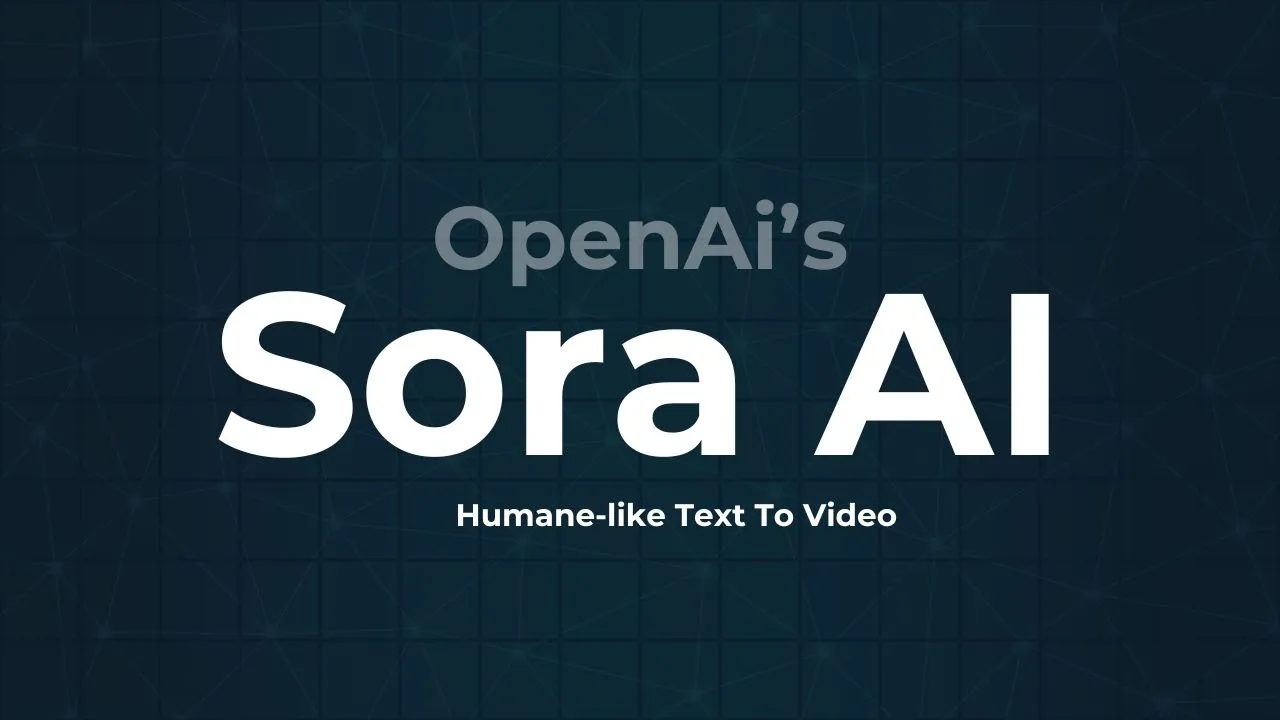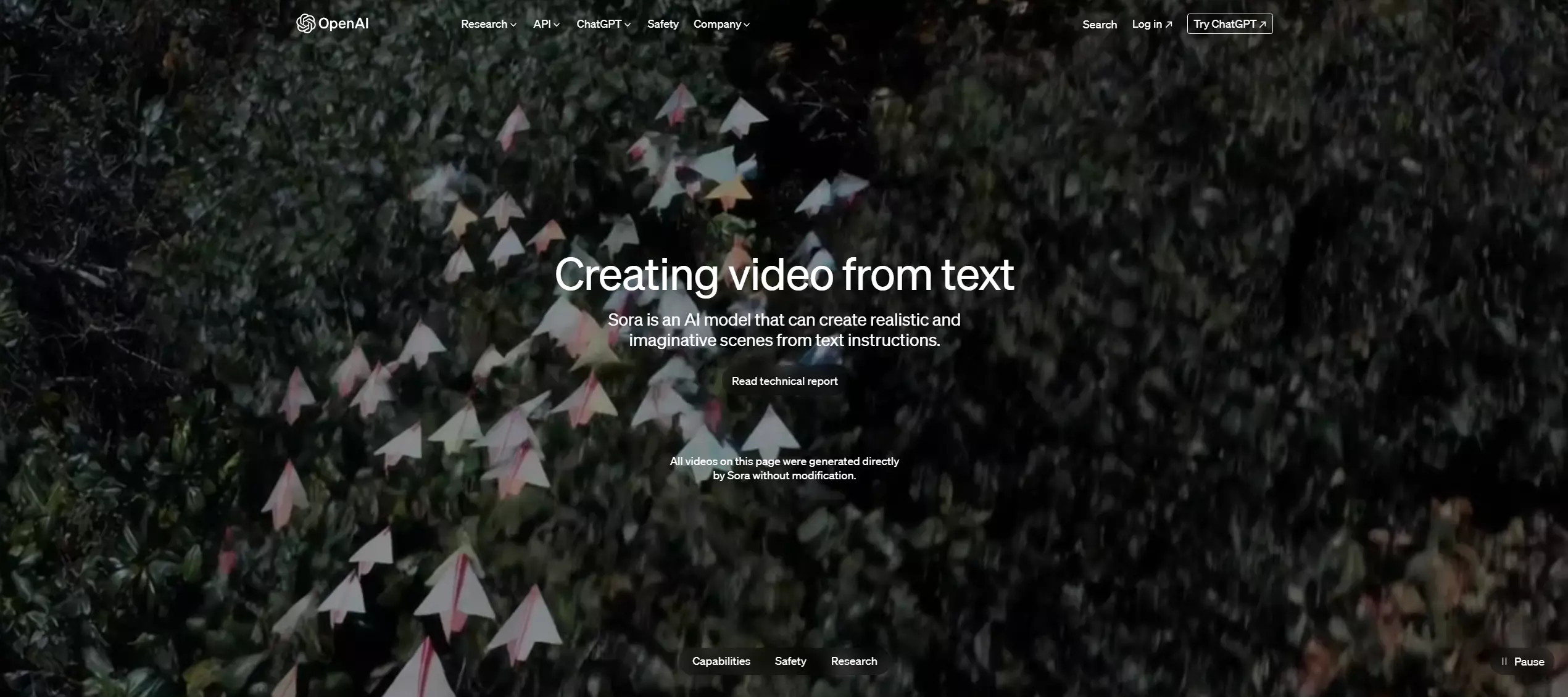
Once more, OpenAI has captivated the world with a groundbreaking AI revelation: Sora, an OpenAI video generator capable of producing remarkably lifelike films.
Certain samples released earlier are so realistic that distinguishing them from genuine camera footage is challenging. Curious to know more about Sora AI?
Keep delving into this article to uncover details about this remarkable AI video generator that holds the promise of revolutionizing text-to-video AI.
What is Sora?
Sora represents OpenAI's foray into text-to-video generative AI models. In essence, you provide a textual prompt, and Sora generates a corresponding video based on the description provided.

According to OpenAI's recent blog post, Sora demonstrates an impressive ability to generate intricate scenes featuring multiple characters, diverse types of motion, and precise details of both the subject and background.
This advancement showcases Sora's proficiency not only in comprehending user prompts but also in interpreting how these elements manifest in the real world.
How does Sora Work?
Sora employs a unique approach by amalgamating features of text and image-generating tools within what is known as a "diffusion transformer model."
Initially introduced by Google in 2017, transformers constitute a type of neural network renowned for their utilization in large language models like ChatGPT and Google Gemini.
On the other hand, diffusion models serve as the fundamental framework for numerous AI image generators. These models operate by commencing with random noise and iteratively progressing toward generating a coherent image aligned with the input prompt.
While generating a sequence of images suffices for creating a video, maintaining coherence and consistency across frames is paramount.
To tackle this challenge, Sora leverages the transformer architecture to manage the relationship between frames. Unlike their conventional usage in identifying patterns within text-based tokens, Sora repurposes transformers to interpret tokens representing small spatial and temporal patches.
How to Use Sora AI?
Let's see how to create an AI video by Sora.
Producing Videos
Upon crafting your prompt, submit it to Sora. The model then transforms static noise into a coherent movie that adheres to your directives.
This entails generating or expanding upon videos while ensuring consistency in characters and visual styles across various scenes within a single video. Understanding what Sora AI is becomes crucial in this process.
Formulating Your Prompt
When harnessing Sora to produce videos, formulating a compelling text prompt serves as the initial step. Leveraging its profound comprehension of language, the model interprets prompts and conjures captivating characters and settings brimming with vivid emotions.
For instance, you can outline a scenario involving multiple characters engaging in specific actions within a given context. The more precise your instructions, the more effectively Sora can conceptualize your vision.
Reviewing And Refining
Following Sora's creation of the video, it's imperative to scrutinize it for accuracy and adherence to the provided prompts.
Given the model's limitations, such as challenges with intricate physics simulations or specific cause-and-effect scenarios, you may find it necessary to adjust your prompt or make modifications to achieve the desired outcome.
What are the Risks of Sora?
Given that Sora is a new product, its risks have not been fully outlined yet. However, they are likely to resemble those associated with text-to-image models.
1. Generation of Harmful Content
Without appropriate safeguards, Sora has the potential to generate inappropriate or harmful content. This could include videos containing violence, gore, sexually explicit material, derogatory depictions of groups of people, hate imagery, or promotion of illegal activities.
The definition of inappropriate content varies greatly depending on the user (such as a child versus an adult) and the context of video generation (e.g., an educational video about fireworks could inadvertently become graphic).
2. Misinformation and Disinformation
One of Sora's strengths, as evident from the example videos shared by OpenAI, is its ability to create fantastical scenes that defy reality.
While this can be creatively engaging, it also opens the door to the creation of "deepfake" videos, where real people or situations are manipulated to convey false information.
When such content is presented as truth, whether accidentally (misinformation) or intentionally (disinformation), it can lead to significant problems, especially in the realm of politics and elections.
3. Biases and Stereotypes
Generative AI models like Sora heavily rely on the data they were trained on. Consequently, if the training data contains cultural biases or stereotypes, these may be reflected in the generated videos.
Biases in the output can perpetuate discrimination and prejudice, with potentially harmful implications, such as influencing hiring decisions or policing practices.
3 Best Sora Alternatives
Several alternatives to Sora exist for creating video content from text:
1. Runway Gen-2: A prominent alternative to Sora, Runway Gen-2 is also a text-to-video generative AI, currently accessible on web and mobile platforms.
2. Lumiere: Recently introduced by Google, Lumiere is available as an extension to the PyTorch deep-learning Python framework, offering similar functionality.
3. Make-a-Video: Introduced by Meta in 2022, Make-a-Video is accessible via a PyTorch extension, providing users with text-to-video generation capabilities.
Final Words on Sora AI
Now you should know What is Sora AI. This cutting-edge technology shares similarities with the GPT series of modeling languages, which powers OpenAI's virtual assistant, ChatGPT.
Like its predecessors, Sora employs a "transformer" architecture, a neural network structure adept at transforming inputs into outputs.
Moreover, Sora incorporates features from DALLE-3, including the recaptioning mechanism.

